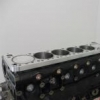Announcements
-
Similar Content
-
Latest Posts
-
By Nightmare_mistress_R33 · Posted
I am currently going this route. I am curious how much horse power you put behind the cut bell housing? Collins was telling me I am going to crack it and bluh bluh bluh. Because I didn’t buy the custom fly wheel from him. I am looking for somewhere around like 500 hp -
Forgot to mention that these are the before pics when I first got it!
-
Thanks @PranK for the updated member status, much appreciated! 👍🏼 Now, about those pics… Unfortunately I could only find ones that I took in the dark. I was soon to discover that underneath it wasn’t in the best shape, but it was mine and that’s all I cared about at the time 😆
-
Oh, and only having done this task yesterday, I've now driven the car ~60km since, and while it is hard to avoid placebo effect and confirmation bias, I reckon that some annoyances I had with the way the car has been behaving have improved. Which....kinda makes sense, I guess. If the bushes were really stiff and resisting rotation, they would have been contributing to the effective wheel rate. And if it was more so on one side (which it was, because one side was worse than the other) then.... you might imagine that the additional rate would be asymmetric, and potentially even different between compression and rebound. And so... the car has been twitchy at higher speeds - like freeway on ramps. It really shouldn't be. The wheel alignment is good and there are no (other) known problems elsewhere in the suspension. But at 90-100 on a long sweeping ramp, tiny steering wheel motions would make it feel like it wanted to rear steer. Quite nervous. At lower speeds it would heave about in a manner that it didn't use to. Didn't want to put power down, etc etc. Now...seems to behave better. Am going to have to concentrate on the various corners where it has exhibited weirdness, on the rare occasions when I can get a decent run at them without Methanial getting in the way in his D-Max/Ranger/LDV Van/etc.
-






Recommended Posts
Create an account or sign in to comment
You need to be a member in order to leave a comment
Create an account
Sign up for a new account in our community. It's easy!
Register a new accountSign in
Already have an account? Sign in here.
Sign In Now